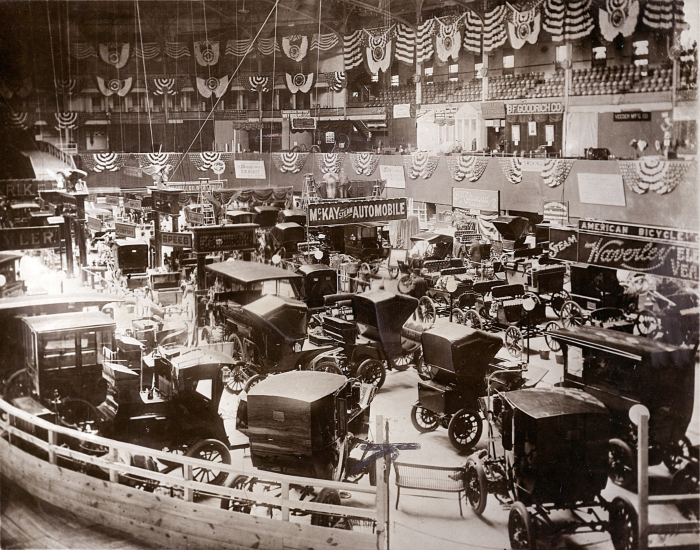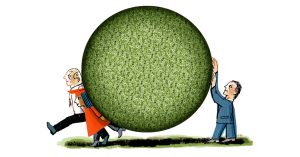
Detroit opened its first auto show since the beginning of the coronavirus pandemic this week, and the subdued spectacle illustrated how automakers are changing the way they market cars and trucks.
More automakers are skipping shows and unveiling fewer products at them, with less glitz. While Jeep did unveil a plug-in hybrid version of its Grand Cherokee on Wednesday by scaling a two-story-high indoor track, 30 years ago the company drove one up the convention centre’s steps and through a plate of sheet glass.
The tab for exhibiting at a show runs into the millions, and automakers, particularly luxury brands, are choosing to tout their wares instead at the Consumer Electronics Show in Las Vegas, or the Texas state fair or via a virtual launch. Frankfurt held its last show in 2019, and the Geneva International Motor Show said it will not hold another event until next year, and then in Qatar, not Switzerland.
Yet US consumer attendance at auto shows is recovering as the pandemic ebbs, and proponents say they still represent a unique opportunity for automakers: a place where potential buyers pay to be marketed to.
“That is gold,” said Dan Bedore, an industry consultant who worked in communications for Ford and Nissan. “People would kill for that in other businesses . . . The death of the auto show is exaggerated.”
But he added, “the decline is certainly real”.
Auto shows grew out of 19th-century industrial expositions and bicycle shows. The first US show featuring all cars was staged in 1900 at New York’s Madison Square Garden.
The shows spread across the US, and today a “season” of more than 60 shows runs from October to May, punctuated with important expos in Los Angeles, New York and Detroit.
Detroit’s show vaulted into the international ranks in 1991 following a rebranding as the North American International Auto Show. Held in January, a month when many automakers released new models, the number of launches peaked in 2004 at 70, with public attendance hitting a high of 811,000 a year earlier.
Automotive executives flew in for show openings to speak at 20-minute press conferences with reporters, usually leaving before the floor opened to the public. Manufacturers competed to outdo each other with lavish exhibits, which can cost more than $10mn to design and build.
Executives began to question why they were spending so much to compete with other companies for media coverage, said Chris Stommel, president of the Michigan firm Foresight Research.
Jaguar Land Rover, Volvo and Mazda skipped the 2018 show, followed a year later by Mercedes-Benz and BMW. The companies argued that Michiganders’ loyalty to US automakers made it too hard to crack the market, Stommel said. Their absence prompted others to reconsider their participation, and “then it just started to snowball”.

Covid-19 devastated consumers’ attendance at shows and introduced nerve-racking uncertainty into the multimillion-dollar process of launching a new vehicle at one. Auto executives worried that supply chain disruptions might derail an unveiling or that an auto show might be cancelled, as happened with the 2021 New York show. At the same time, they realised online launches could still generate media coverage.
Auto shows once measured their relevance by the number of products manufacturers debuted there. In Detroit this year, there were six, down from dozens in the aughts. Automakers can only tolerate so much ambiguity “before they give up and do something else”, Bedore said.
Matt O’Mara, an executive vice-president at Texas-based Czarnowski, a firm that designs and builds automotive exhibits, said he is handling the same amount of business, but automakers, particularly luxury brands, are redirecting their spending. They want to either produce an event where they are the sole headliner, or appear at venues geared to the wealthy, like the Pebble Beach Concours d’Elegance, where a ticket costs $525.
“Every luxury automaker has the same problem: they have champagne taste and a beer budget,” he said. Since fewer people buy luxury cars, the brands command smaller marketing budgets, pushing automakers to spend dollars “in target-rich environments”.
Even though luxury car buyers are more likely to visit auto shows, Stommel said, it is the high-volume brands that most frequently attended shows held during the truncated 2021-22 season. About half of 35 auto brands appeared at 17 shows or more.
Floor space at this year’s show was dominated by General Motors’ family of brands, at 75,000 square feet altogether; Stellantis at 85,000; and Ford and its luxury brand, Lincoln, at 64,000.
Stommel’s research shows that before the pandemic, each season the US’s 56 largest auto shows drew a combined 11mn people. Thirty-five of those shows took place last season — 63 per cent of the whole — and they drew about 5.5mn people, or half of pre-pandemic attendance.
The changing nature of auto shows can be seen in GM’s unveiling of its Chevrolet Equinox. Marketed as an electric sport utility vehicle for the masses, the company launched it a week before the Detroit show. But when consumers arrive at Huntington Place, an Equinox will be parked on the carpeted floor with a product specialist nearby to explain the tech to visitors without drifting into a hard sell.
Those specialists are the corporate descendants of the 1980s “spin and grin girls”, who displayed the cars on turntables but were barred from talking about them. Many are employed by talent agency Productions Plus, helmed by president Hedy Popson. Just as the staffers’ job has changed in the last decade to emphasise product expertise over glamour — “This isn’t where pageant queens come to die” — auto shows are changing too.
Business at the agency roared back this year, Popson said, but now automakers are focused less on generating news coverage and more on educating and entertaining the public.
“Saying the auto show is dead is like saying the state fair is dead,” Popson said. “It might attract a different audience, and for different reasons, but I don’t think it will ever go away.”

